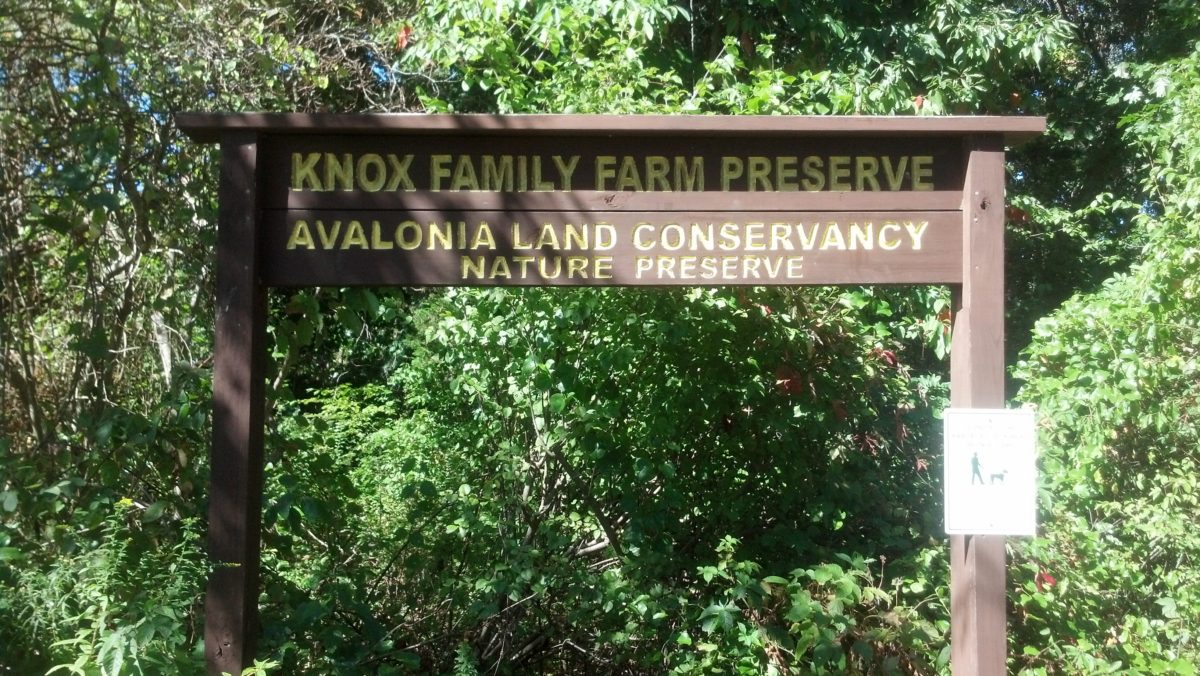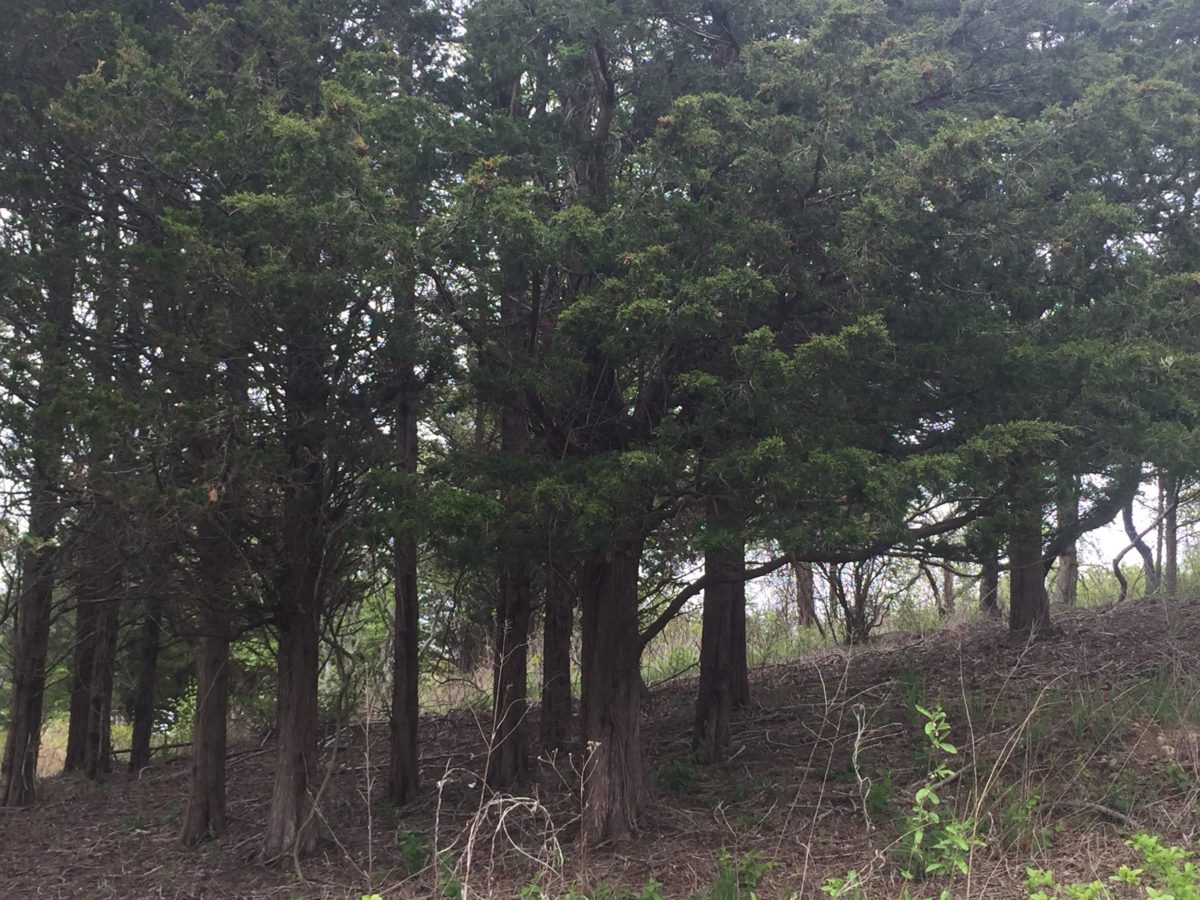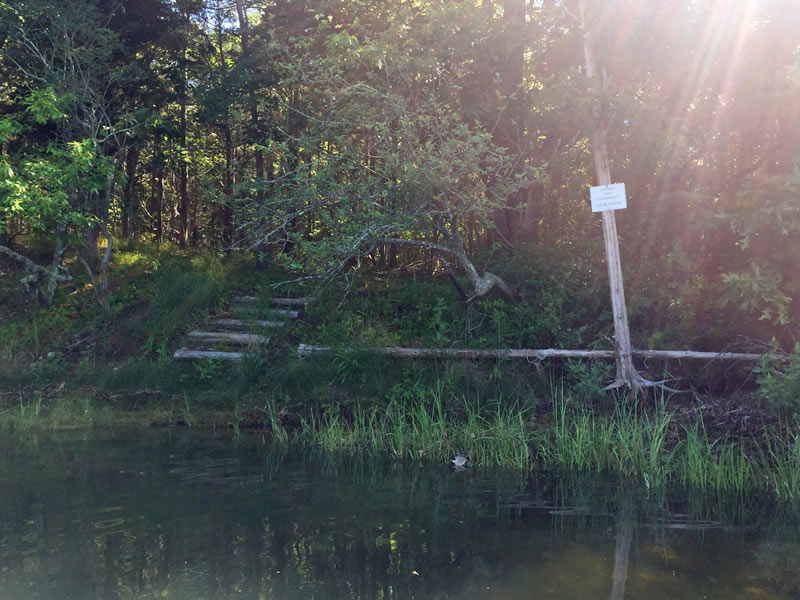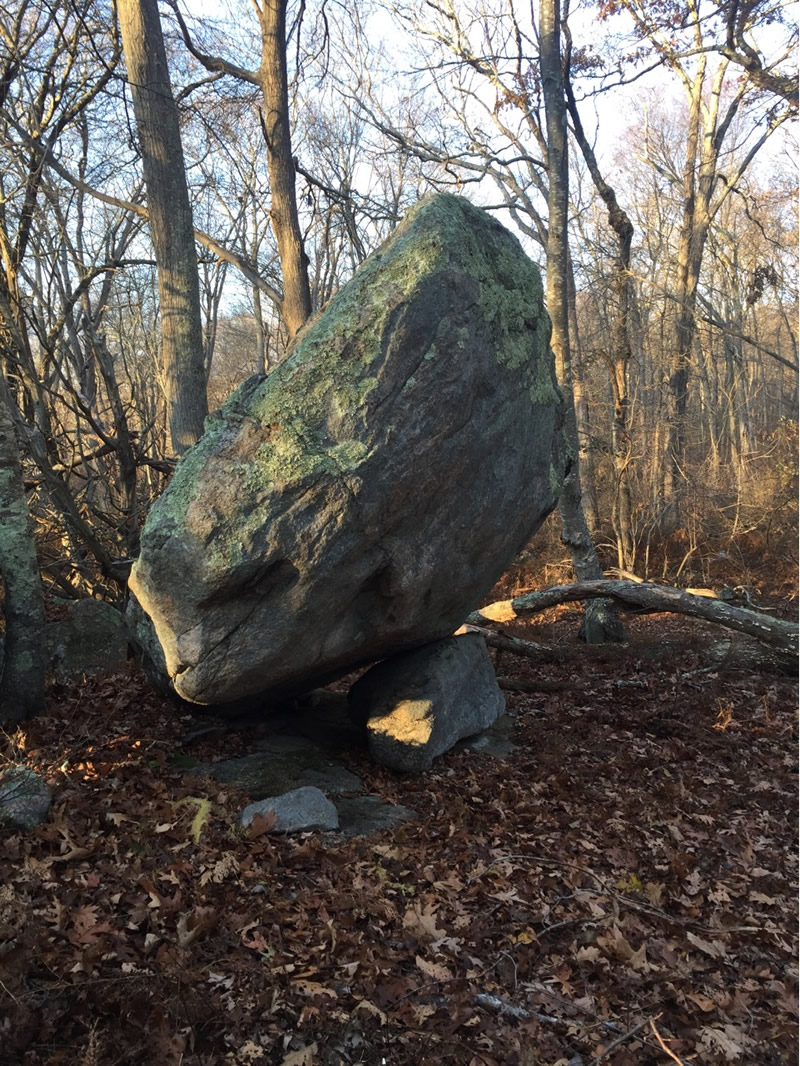Back to All Hike & Seek Properties
Follow the right-of-way path until you get to the entrance sign at the end of the big field. (Please be respectful of the privacy of the owners here.) The main trail into the preserve is part of a historic pathway with big stone walls on both sides of the lane. There are several habitats here and it is a good place to visit the water’s edge. It is also a good place to think about how the glaciers impacted our landscape thousands of years ago!
above photo courtesy of Rick Newton
Total Hike & Seek Targets: 5
SIGN

CEDAR GROVE
Cedar trees grew in many years ago when agricultural fields were abandoned. They form dense, dark groves which are good habitat for many birds, even owls. Find a cedar grove.
ANOTHER ENTRY
This preserve borders Quiambaug Cove. If you happen to be kayaking in the cove, you could tie it up here and take a walk on the trails. Can you find the kayak landing and go down to the water? Where would you tie it up?
SIGNS OF GLACIERS
Many centuries ago, during the Ice Age, this whole area was covered with thousands of feet of ice that moved slowly over the land toward Long Island Sound. As they moved, and later melted, they changed the face of the landscape by scouring out big depressions called kettle holes, and covered the land with rocks of all sizes, leaving giant boulders in very odd places. In the center of this property, there is a kettle hole that often holds water year-round. Can you see how the ground has been scraped out? Follow the extended loop trail to the north and find the balancing boulder!
WOODPECKERS
As you walk through the woods, keep looking up into the trees to find signs of woodpeckers. The trunks of old, dead, or dying trees may have areas of lighter colored wood where the bark has been pecked away. Holes of varying sizes were created by woodpeckers looking for insects to eat or to make nesting places. Check for woodchips on the ground below these trees. The pileated woodpecker, the largest of the woodpecker family (almost the size of a crow!), lives here and the signs of its activity are the most obvious.




